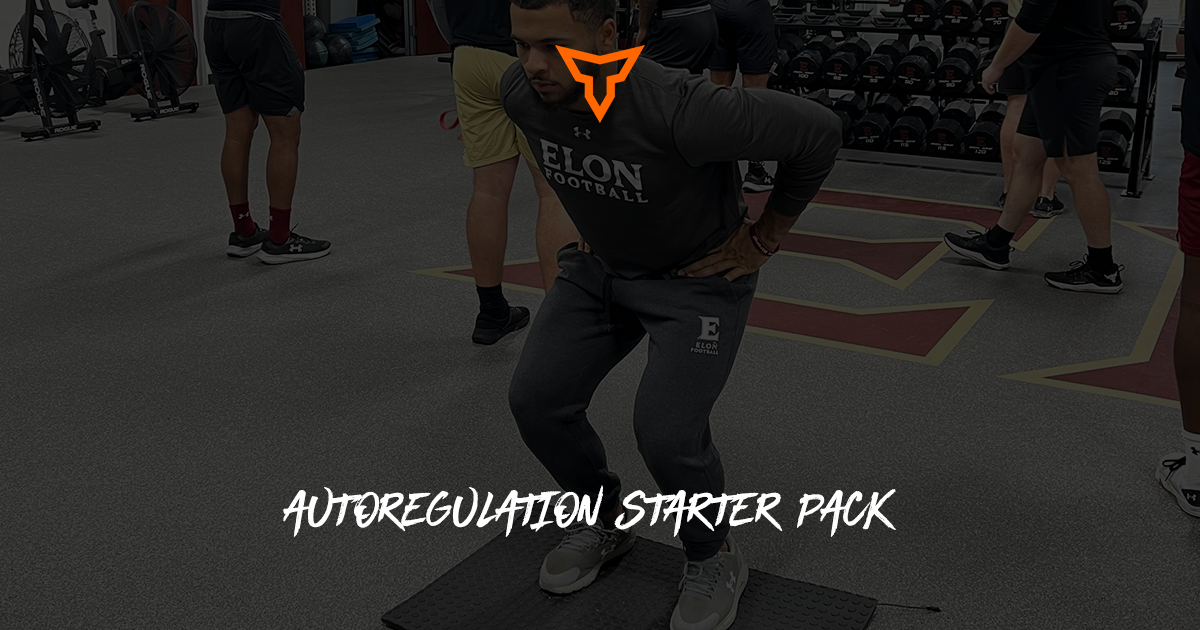Autoregulation: A Primer
Autoregulation is the process of adjusting workloads according to current readiness measures. Due to fluctuating capabilities on a daily basis, many have implemented systems to take these oscillations into account. There are many forms of autoregulation, from subjective modes like adjusting prescriptions according to wellness questionnaires to more objective modes like adjusting barbell weight by measuring velocity or power. There are also different time scales to implement autoregulation. Some are implemented daily, and others on a weekly or monthly basis.
For reasons of clarity and succinctness, this article will focus on our emerging reliance on methods such as percentage heart rate and barbell velocity for adjusting absolute workloads to fit exercise prescriptions in real-time. I will also stay away from common detractors such as poor effort on the part of the athletes, lack of buy-in, the ability for autoregulation to be gamed, etc. Those points are obvious and have been experienced by many.
The Newest Kid on the Block
All industries evolve, and strength and conditioning is no exception. Percentage-based programs, yardage/meterage-based running programs, Prilepin’s table, work to rest ratios, etc. used to be the norm, but with the advent of affordable and effective technology, monitoring and adjusting workloads based on emergent information is the new normal and for good reason. From a theoretical perspective and empirical data, autoregulation is as good if not better in some circumstances than previous methods.
As with any diffusion of innovation, they all follow a consistent pattern. You have a few early adopters, then a rapid increase in usage and awareness, the peak in which the critical mass of people are using this innovation, and then the downward slope to some sort of equilibrium. Autoregulation is most likely at its zenith or darn close.
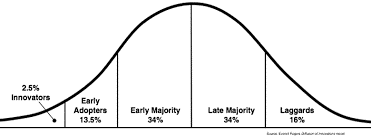
But with the adoption of new innovations or policies, there are unintended consequences that weren’t recognized initially. While pointing out the problems with old methods, many times we fail to understand mechanisms that provided some hidden benefit. I believe this to be the case with autoregulation when using it by itself without any other strategies for adjusting workload. By abandoning modalities that controlled external outputs, we abandon monitoring stimuli that are largely responsible for causing adaptation. What’s more, we run the risk of introducing extremely novel stimuli or ramping up workload at an unsustainable rate.
Pitfall #1: Autoregulation Ignores Absolute Outputs
Autoregulation is primarily or exclusively concerned with relative internal measures and does not take into account absolute external measures. In other words, autoregulation doesn’t actually control outputs (weights lifted, distances ran, minutes played, etc.). Autoregulation is, by definition, a method to change the output according to some input. It is only concerned with measuring the internal (RPE, heart rate percentage, barbell velocity, etc.). The output can change substantially as long as it fits the protocol. The primary assumption that we make is that readiness remains relatively steady. It may even look that way if you look at team averages.
While outputs can be described in a multitude of ways, for the sake of following a cogent train-of-thought we will equate output to intensity. For jumping and landing, this is height. For running, this is sprint speed. For lifting, it’s the weight on the bar. Intensity refers to the amount of something relative to its maximum. In the autoregulated world, external intensities aren’t prescribed, but rather, they fluctuate according to some prescribed internal measure. So why does this matter?
If we can agree that the intensity of exercise is a substantial, if not the most important metric for stimulating adaptation, then we can agree that controlling for it in some way is also important. Controlling for intensity protects against our athletes’ performances displaying gross behaviors of dysfunctional systems, namely, extreme oscillations and growth and collapse.
Let’s assume we have an athlete with an average back squat 1RM of 500 lbs. The autoregulation method used is an initial velocity starting point. Let’s also assume that two weeks of back squat training are as follows.

Under normal conditions, this would equate to 425 lbs being lifted in week 1 and 450 lbs being lifted in week 2. Let’s introduce a scenario that isn’t outside the normal experience of collegiate athletes. Let’s say that in week 1, there is a 5% reduction in readiness so that the athlete’s max is now 475 lbs. Let’s say that they have a 5% rebound above equilibrium in week 2 and now have a max of 525 lbs. Under these conditions, the loads lifted are 405 lbs and 475 lbs respectively. In my opinion, these conditions are modest, and oftentimes you see larger reductions in capability, especially among athletes with a high degree of preparedness.

You can see that the percent difference in load lifted is significant in these two scenarios from just a 5% deviation from baseline. In my experience, this scenario plays out almost every week with at least some athletes. The difference between a 6% and a 17% bump in intensity is substantial, especially in one exercise in one week.
Pitfall #2: Autoregulation Camouflages Poor Training Models
I believe it’s true that if all our exercise prescriptions are autoregulated, the previous pitfall is probably a wash. Throughout an entire week, we could have multiple checks and balances and the end product is that the athlete will be relatively safe from doing too much or too little. However, the downside to this is that our training model could have very little predictive power for progressing athletes. We could have poor prescriptions for our progressions, but autoregulation can become a buffer for our miscalculations. Think of it like this. In a given week, how many of our athletes benefit from autoregulated strategies, and to what degree? The more athletes that need autoregulated interventions to a greater degree, the more inappropriate our initial prescription was. In this situation, autoregulation acts like a crutch.
With old methods like percentage-based programs, there is no hiding when a prescription simply doesn’t fit. This forces a coach to face reality and improve the model. That’s how models get better. If autoregulation is constantly saving the day and adjusting the workload, then the training model that delivered the prescription for that particular day can survive. Of course, it’s possible to make training fluid while also tracking readiness trends and updating models, but autoregulation makes it tempting to keep shoving round pegs in square holes.
When it comes to our real-time autoregulated methods, how many of us actually take the time to see how far our athletes deviate from their norms? And if we are cognizant of this, do we track it? While some are more than eager and some violently resistant to adding more metrics to their plate, I believe this concept is at least important enough to update models, change methods, or create some loose and fast rules that can be applied without having an entire spreadsheet committed to it.
Pitfall #3: Autoregulation Isn’t Appropriate for Reintroducing Training
When an athlete resumes training after a lengthy deload or offseason, they can be in a prime position to gain fitness rapidly. As stated previously, real-time autoregulation isn’t particular about outputs. It measures relative internal metrics. As tempting as it is to push the adaptation curve and maximize performance, this comes with a cost. It may seem attractive to develop our athletes’ physical potential as quickly as possible, but biological systems, like all systems, struggle with rate of change. This approach is the opposite of “slow cooking” an athlete’s development. The lack of administered intensities allow an athlete to control the rate of change of intensity over a training cycle. While some degree of autonomy is good, humans are especially susceptible to present bias in their decision-making. This presents a significant problem in which we make choices that sacrifice the long-term for the short-term. This is where the cost of maximizing performance is felt. Without a third party regulating the rate of change independent of our real-time feedback, we’re free to push as hard as the autoregulated prescription will let us. This rapid amount of loading over a short time opens the door for injury, burnout, or staleness, especially after resuming training. Quick to ripe is quick to rot.
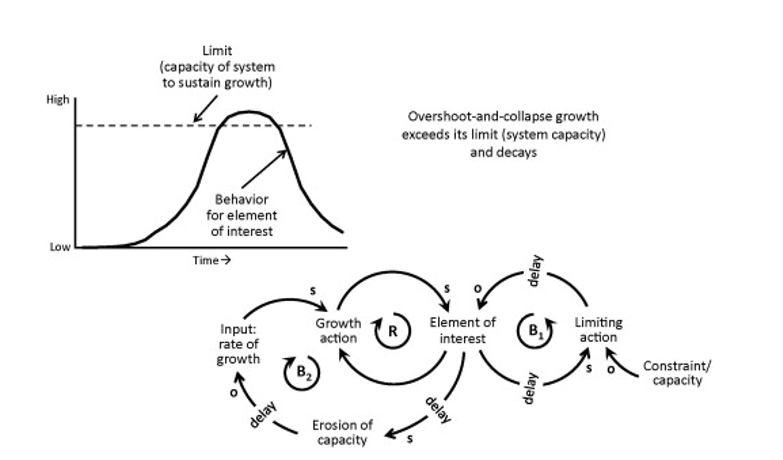
The counterintuitive thing to do is to take our time. It’s not sexy, but it does allow the system to increase its capacity for whatever task we are engaged in. Imagine a business that catches and sells fish. The business starts out with a few boats and a large population of fish. If they catch a moderate amount of fish, the remaining fish are plentiful enough that they are able to replenish the fish population. If the owner of the business decides to incrementally increase the amount of fish he catches and sells, eventually a threshold will be crossed in which the remaining fish are unable to replenish the population. If the fishing practices aren’t changed, the system collapses. If we are always maximizing, at some point we will cross a threshold that is tough to come back from. Taking our time allows us to push that threshold up. When reintroducing training, use hard limits on how quickly an athlete can progress.
Pitfall #4: Autoregulation Adjusts Workloads, But Not Protocols
Real-time autoregulation doesn’t have the ability to change prescriptions when it isn't appropriate. Actually, it does the opposite. It enforces the same prescription with lower or higher outputs. There are times that the prescription should be changed. If we are planning a HIIT session using heart rate as our indicator for starting and stopping, but our athletes' outputs are so low that it turns into a continuous long-distance run, the protocol should be changed. Technically the prescription was fulfilled, but the output was so low that the object of the entire session was altered.
If we are supposed to have a bunch of heavy singles on squat, but an athlete’s performance is substantially below normal working weights, I contend that instead of performing singles at a high effort but much lower intensity, the entire prescription should be changed. There are times when changing the output of a training protocol erases the essence of the training goal. I understand that there are times that you have to make these sacrifices because of time constraints, but often there are other viable solutions.
Obviously what I’m suggesting is another form of autoregulation, but it is a separate mechanism that actually changes the autoregulated prescription. Confusing, I know.
Looking For Solutions
Now that we’ve gone over some of the pitfalls of relying too heavily on these new methods, let’s look at some things you can do to avoid these pitfalls.
Pitfall #1 Fix
Use autoregulated methods with percentage increase caps from week to week. This strategy is mainly concerned with limiting growth. If readiness is down, autoregulation takes it into account. If readiness is peaked, a strict percentage increase from the previous week’s load is implemented even if the autoregulation says that the load can be increased. This ensures that the rate of change to the system is controlled. If the rate of change is controlled, the delay in the system doesn’t hurt us as much. Modest increases around 5-10% or less are fine on a daily basis, and research seems to support this. Controlling for the rate of change of load is paramount. Going from 100mph to 0mph in 30 seconds is a walk in the park. Going from 100mph to 0mph in half a second kills people.
Pitfall #2 Fix
To update models, you have to establish some relationship between training and training response. The number of metrics you can track is endless. Coaches track volume, intensity, exertion load, mileage, accels, decels, high speed running, e1RM, etc. Reductionist science can be a good tool for understanding pieces of the whole, but not for understanding the whole. Broad, nonspecific metrics like sRPE-TL are easily implemented immediately and can give you a 30,000-foot view of your athletes’ training. Another option is simply checking on how many athletes fulfilled their prescribed exercises with the workloads you would expect. Instead of taking a deep dive, fly high above. You can see more.
Pitfall #3 Fix
Use percentages or absolute limits when reintroducing training. After going through the initial period of training, see how that workload affects them, and then increase inversely according to the magnitude of fatigue you suspect it to have caused. If you begin with modest loads and make small incremental increases over time, it’s tough to go wrong. If your time scale is small, the percentage change from week to week is small. 2-3% gain week to week on the bench press is perfectly acceptable. Weekly or monthly changes in workload can be tolerated at 25% or more. If you really want to get crazy or you don’t like percentages, use the smallest worthwhile change, z score, or coefficient of variation to quantify change. To me, it doesn’t really matter. The statistical method you choose has to carry meaning, and we are responsible for giving meaning to the numbers.
Pitfall #4 Fix
When performance is low, control for intensity and absolute outputs, but change the structure of the prescription to lower effort. Use the real-time autoregulation to help you determine the readiness of the athlete, then change the prescription according to how far off they are from their norm. Here is another quick example of changing the prescription of our back squats according to what we see from barbell velocity.
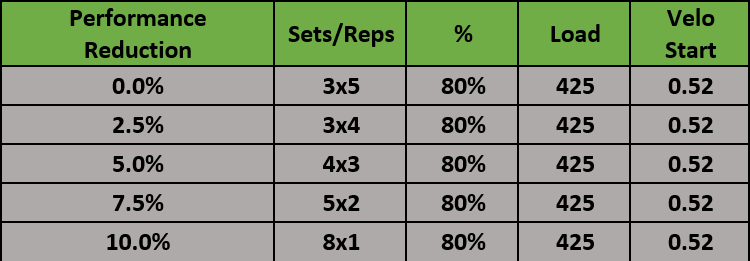
In this example, sets and reps are changed according to an approximate drop in readiness, intensity is maintained, and total volume is slightly reduced. This strategy allows a coach to be more consistent with outputs even if readiness is down. This helps to avoid oscillations in performance.
Wrapping Up
By this point, you probably think I hate autoregulation. The truth is, I love autoregulation. I use multiple forms of real-time feedback in my own training and the training of my athletes. But knowing the downsides of any method we use allows us to know when to use it appropriately and when other methods might be better suited. The goal of this article is to get you to think critically about new technologies. These things are tools, not panaceas.
Subscribe to our blog
Subscribe to receive the latest blog posts to your inbox every week.
Related posts
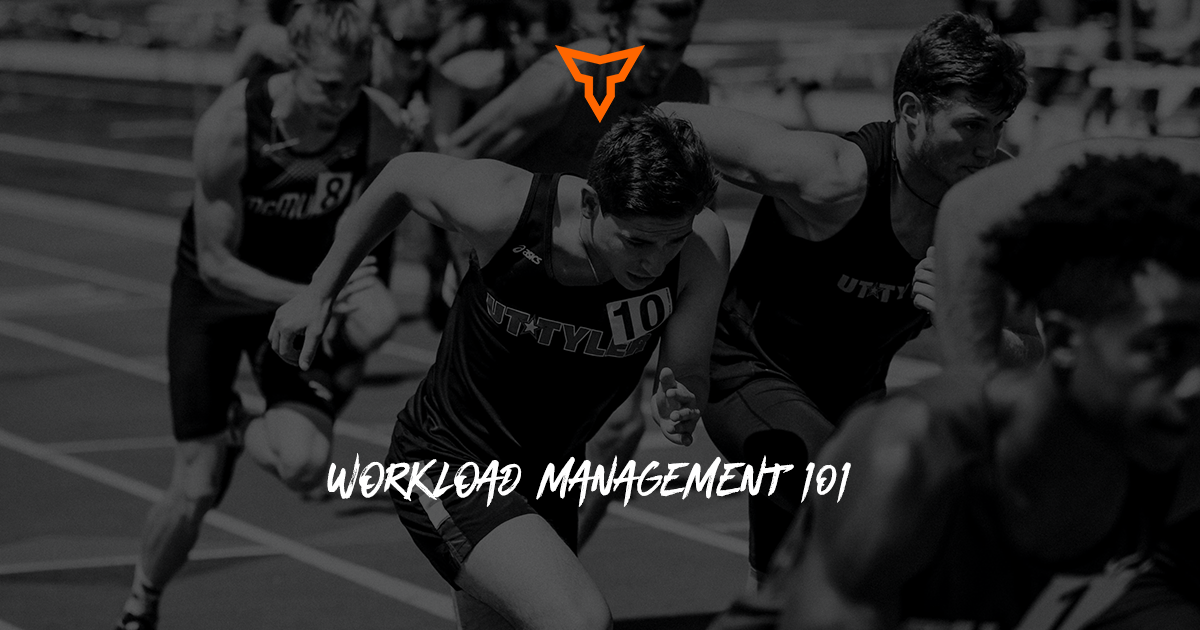
Workload Management 101

5 Step Framework for Training Youth Athletes
